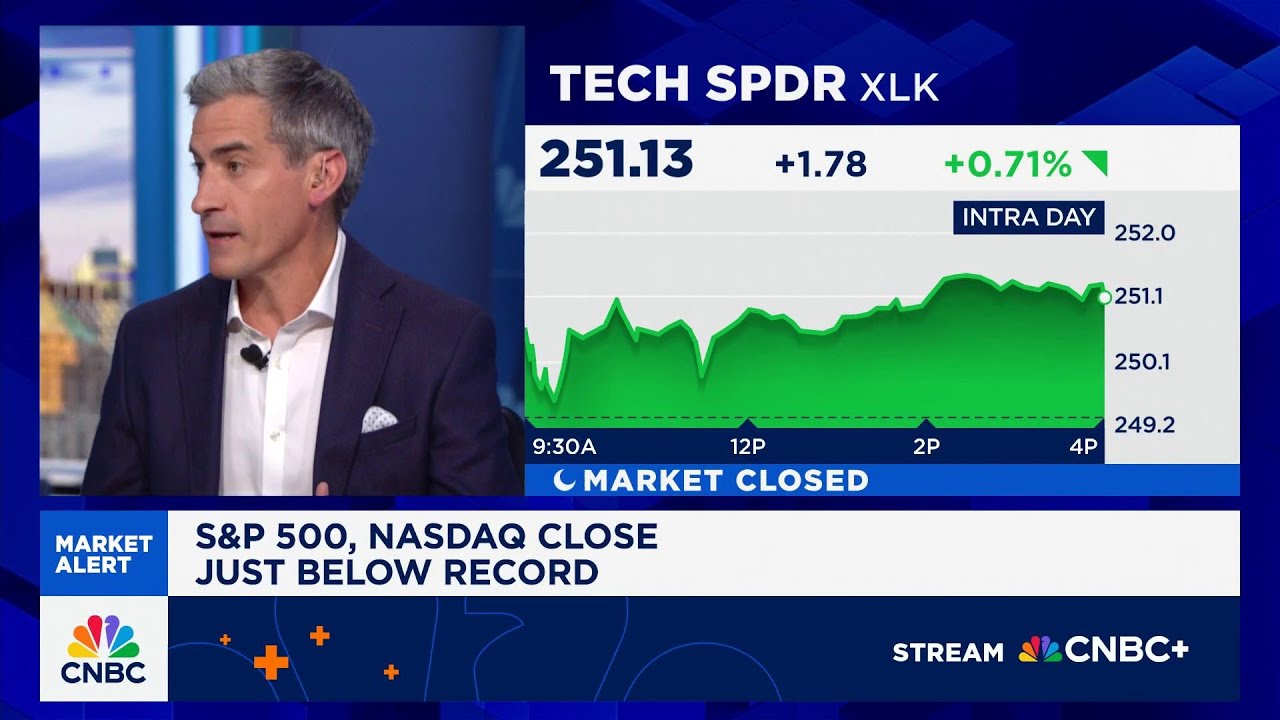Stephanie Link and Keith Lerner highlight strong economic indicators such as a weakening dollar, easing tariffs, and declining inflation, with technology as the dominant driver of the current bull market alongside promising growth in industrial and financial sectors. They express cautious optimism, noting that solid earnings, attractive valuations, and improving financial conditions support continued market gains despite potential valuation limits.
In the discussion on navigating the current market, Stephanie Link and Keith Lerner highlight several positive economic indicators supporting continued stock market growth. Stephanie points to a weakening dollar, easing tariffs, reduced geopolitical tensions, and declining inflation as key factors contributing to economic resilience. She notes that the Atlanta Fed’s GDP tracker shows solid growth, and earnings are expected to outperform due to stronger-than-anticipated revenues. Additionally, lower bond yields and a significant amount of cash on the sidelines create a favorable environment for stock purchases.
Keith Lerner emphasizes that technology is the dominant theme driving the current bull market, overshadowing earlier concerns about tariffs. While the broader market is approaching new highs, the technology sector has already reached record levels, which could help lift other sectors. He also notes that recent earnings seasons have been better than expected, particularly in growth sectors like technology and communications. The combination of lower interest rates, easing inflation, and a strong tech sector provides a solid foundation for further market gains.
Both strategists express a preference for growth-oriented sectors, with Keith mentioning an overweight position in communication services and technology, as well as a positive outlook on industrials. Industrials benefit indirectly from economic stability and are linked to infrastructure improvements such as power generation and cooling systems. Stephanie adds that the industrial sector has performed well year-to-date despite macroeconomic challenges, driven by investments in data centers, grid upgrades, and aviation, with companies like Boeing and GE showing promising turnarounds.
Stephanie also highlights the financial sector as an attractive opportunity, citing underestimated deregulation benefits and potential changes in banking regulations that could boost earnings. She points out that the number of public companies has significantly declined over the years, but upcoming regulatory changes and improved capital markets could reverse this trend. Financial stocks currently trade at attractive valuations relative to the broader market, making them a compelling buy.
Finally, Keith notes that major financial institutions like JP Morgan and Goldman Sachs are breaking out to new highs, which is typically not a sign of an impending economic slowdown. The market appears to be shifting focus from tariff concerns back to themes like deregulation and potential tax reforms, reminiscent of the late 2010s. Overall, both strategists convey cautious optimism, suggesting that while valuations may limit upside, the combination of strong economic data, sector leadership in technology and industrials, and improving financial conditions supports a positive market outlook.
